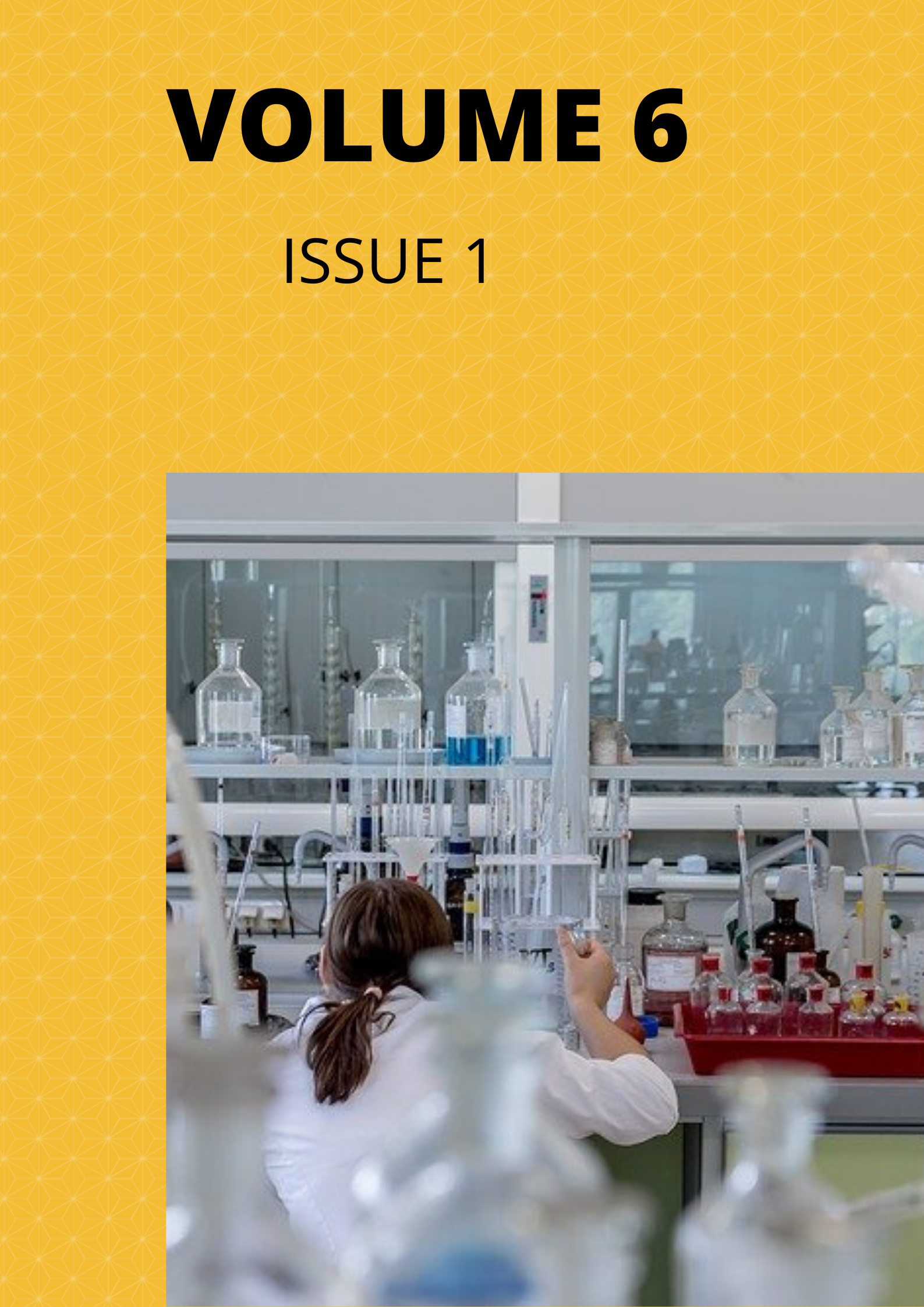Preliminary Screening of Medicinal plants in Nigeria for Phytochemicals and Essential Oils Constituents
Keywords:
Essential oils, phytochemicals, percentage yield, steam distillationAbstract
Applications of plant extracts for medicinal purpose is based on its phytochemical and essential oil components. Therefore, this study was designed to screen some medicinal plants that are typical to Nigerian environment for their essential oil and phytochemicals constituents. The tests results indicated that methanolic extract of the stem bark/leaves of Bosweillia dalzielii, Ocimum americanus, Hyptis spicigera, Hyptis suaveolens, Eucalyptus cammaldulensis, vossia cuspidata, Lavandula officinalis, Cinnamondedrone cubenes, D. microcarpun, D. Mespilisformis, Isoberlinia doka, L. korstringi, and K. sengalensis contain basic metabolite and essential oils. The essential oil content deduced from steam distillation indicated significant concentrations in the studied plants.
Downloads
Published
Issue
Section
Most read articles by the same author(s)
- Henrietta Ijeoma Kelle , Musa Runde, Valorization of an Agricultural Waste-Corncob: Investigation of Potassium Oxide from Corncob Ash Crystals as an Antiseptic and Disinfectant Agent , Communication In Physical Sciences: Vol. 11 No. 2 (2024): VOLUME 11 ISSUE 2
- Musa Runde, M. H. Shagal, Y. Abba, Production and Purification of Biogas Generated by Co-digestion of Cow Dung and Kitchen Waste , Communication In Physical Sciences: Vol. 5 No. 4 (2020): VOLUME 5 ISSUE 4
- Musa Runde, M. H. Shagal, Y. Abba, Cow Dung and Kitchen Waste as Economical Source of Biogas: Production and Analysis , Communication In Physical Sciences: Vol. 7 No. 3 (2021): VOLUME 7 ISSUE 3
Similar Articles
- Izuagbe Gilbert Osigbemhe, Essential Oil Composition and Anti-Microbial Activity of Zyzgium aromaticum (l) merril and Percy [fam. Myrtaceae] Using Hydro-Distillation and Solvent Extraction Methods , Communication In Physical Sciences: Vol. 12 No. 4 (2025): VOLUME1 2 ISSUE 4
- Uduak Aletan, Imaobong Nyambi Akpet, Biochemical Information from the leaves of Pterocarpus mildraedii , Communication In Physical Sciences: Vol. 7 No. 4 (2021): VOLUME 7 ISSUE 4
- Uduak Aletan, Elijah Adetola, Ahmed Abudullahi, Olayinka Onifade, Hadiza Kwazo Adamu, Phytochemical analysis, invitro antioxidant activity and GC-MS studies of crude extracts of Cissus populnea stem , Communication In Physical Sciences: Vol. 8 No. 4 (2022): VOLUME 8 ISSUE 4
- Abdulfatai A. Otori, Akeem A. Jimoh, John T. Mathew, Development of Heterogeneous Catalyst from Waste Cow Bone Using Parinarium Macrophylum Seed Oil for Biodiesel Production , Communication In Physical Sciences: Vol. 7 No. 3 (2021): VOLUME 7 ISSUE 3
- Patrick G. Udofia, Philippa C. Ojimelukwe, Olusegun A. Olaoye, Anthony N. Ukom, Moses. L. Ekanem, Immaculata I. Okparauka, Evaluation of Antioxidant Activity of Ethanol Extract of Root and Stem Bark of Moringa oleifera (MO) obtained from Utu Ikpe, Ikot Ekpene Local Government Area, Nigeria , Communication In Physical Sciences: Vol. 8 No. 1 (2022): VOLUME 8 ISSUE 1
- Forward Nsama, Strategic Development of AI-Driven Supply Chain Resilience Frameworks for Critical U.S. Sectors , Communication In Physical Sciences: Vol. 12 No. 5 (2025): Vol 12 ISSUE 5
- Godwin J. Udo, Usoro M. Etesin, Joachim J. Awaka-Ama, Aniedi E. Nyong, Emaime J. Uwanta, GCMS and FTIR Spectroscopy Characterization of Luffa Cylindrica Seed Oil and Biodiesel Produced from the oil , Communication In Physical Sciences: Vol. 5 No. 3 (2020): VOLUME 5 ISSUE 3
- Gideon Wyasu, B. Myek, Synthesis of an azo dye and its cobalt complex derived from 3-aminophenol , Communication In Physical Sciences: Vol. 6 No. 1 (2020): VOLUME 6 ISSUE 1
- Eteyen Uko, Microbiological Analysis and Antibiogram of Blood Pressure Cuffs in Some Primary Health Centres in Ikot Ekpene Metropolis, South- South Nigeria , Communication In Physical Sciences: Vol. 12 No. 6 (2025): Volume 12 ISSUE 6
- Saidu Usman, Comparative Study of Nutrient Compositions of Some Selected Cereal Grains Available in Shuwarin Market, Jigawa State, Nigeria , Communication In Physical Sciences: Vol. 9 No. 2 (2023): VOLUME 9 ISSUE 2
You may also start an advanced similarity search for this article.




